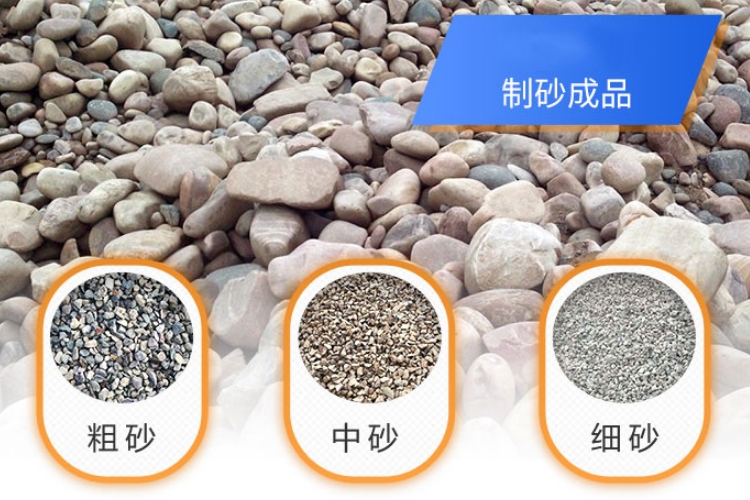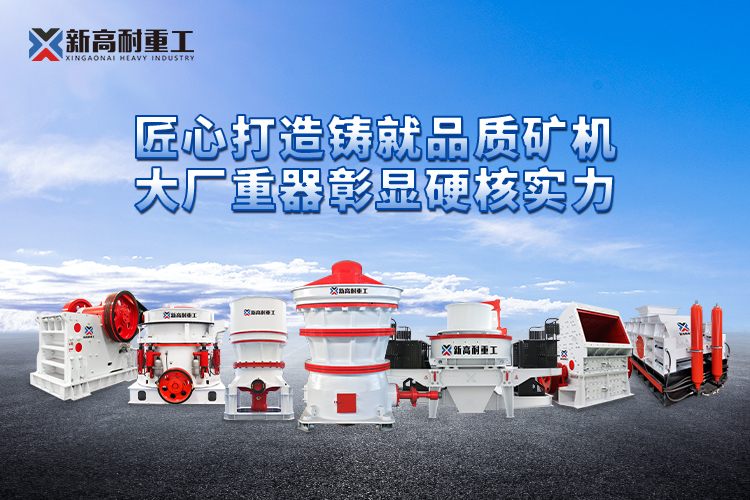
 xgncrusher
xgncrusher
he gradation of manufactured sand refers to the proportion of sand size particles. Different manufactured sand grading methods have different application scenarios and advantages. Let’s take a look at several common manufactured sand grading methods and their specific applications.

Application of different grading methods
Single grade configuration
Single grading refers to the use of sand with a single particle size for preparing concrete. This grading method has the advantage of being simple and easy to implement, but it can easily lead to excessive gaps between sands, affecting the compactness and strength of concrete. Therefore, single grading Grading is suitable for projects that do not require high concrete strength.
Double level configuration
Double grading refers to the preparation of concrete using sand with two different particle sizes. This grading method can increase the density of concrete and improve its strength and durability. Therefore, double grading can meet the performance requirements of different projects for concrete. , is a more commonly used grading method.
Three-level configuration
Three-grade grading refers to the preparation of concrete using sand with three different particle sizes. This grading method can further increase the density of concrete and improve its strength and durability. Therefore, three-grade grading is used in some high-strength and high-durability applications. It has been widely used in engineering projects.
Mixed gradation
Mixed grading refers to mixing natural sand with different particle sizes and artificially graded manufactured sand. Mixed-graded manufactured sand has better water permeability and load-bearing capacity, and can also improve the strength and stability of the structure. Therefore, This method is widely used in some special projects, such as hydraulic structures, airport runways and other projects that require extremely high strength and stability.
Taking double-grading and three-grading as an example, although they can significantly improve the strength and durability of concrete, they will also increase the brittleness of concrete to a certain extent. Therefore, in the specific production process of machine-made sand, it is necessary to make concrete according to the specific requirements. According to the requirements of construction projects and concrete performance needs, appropriate production processes and grading methods should be selected to achieve the best engineering results. At the same time, it is also necessary to strengthen quality control and management during the production process of machine-made sand to ensure that its quality and stability meet the requirements. Building Requirements.
Reasonable grading standard suggestions
Commonly used machine-made sand grading standards include: Chinese standards, European standards, American standards, Japanese standards, etc. In order to meet the requirements for machine-made sand in different fields, it is recommended to adopt different grading standards. For example: European standards or American standards can be used for machine-made sand in construction, bridges, roads and other fields; for high-quality machine-made sand required for making high-quality concrete, which has special needs, the more stringent European standards can be used. diameter distribution requirements; for some low-quality construction areas, Chinese standards can be adopted to meet basic waterproofing, anti-seepage and other requirements.
In addition, in the preparation of high-strength concrete, the amount of machine-made sand should be controlled within an appropriate range. Generally speaking, the amount of machine-made sand should be controlled between 20% and 30% of the total batch. If too much is used, it will As a result, the strength of the concrete is lower than the design requirements, and if the amount is too small, the working performance of the concrete will be poor and it will be easy to crack and deform.

About machine-made sand equipment
XingaoNai Heavy Industry has been engaged in the mining crushing industry for many years. It not only has VSI series vertical shaft sand making machines, double-roller sand making machines, single-rotor reversible sand making machines, double-rotor sand making machines, cone crushers and other types of fixed machine-made sand production lines The required equipment also includes a new type of mobile sand making machine, which integrates feeding, crushing, screening and conveying. It can be produced on site, making it easy to switch production sites. The finished sand produced by them has reasonable gradation and rounded grain shape. Can reach fine sand standards. As for how to choose, you can comprehensively weigh it based on your actual production situation, site, funds, etc. You can also contact us and we will arrange technical personnel to connect and give you professional reference suggestions.
Author: Xingaonai
Reprint address: https://www.xgncrusher.com/Industralnews/146.html
Copyright © 2016-2030 Xingaonai Group All Rights Reserved. Xingaonai Sitemap